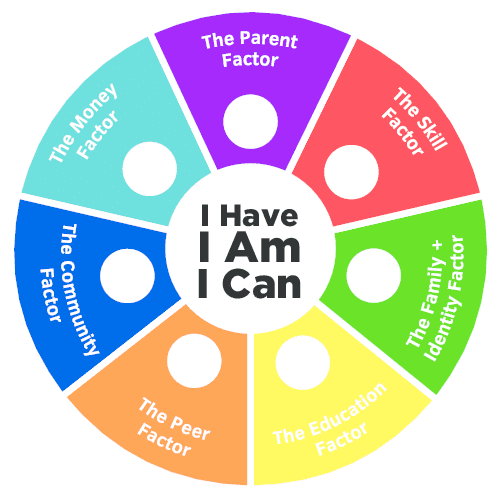How to Use the Resilience Doughnut To Raise Strong Children

Resilience is a valuable skill that every child needs to utilise in their lives. As families and Educators, it is our role to understand how to foster and support the development of resilience in children and young people.
The team at Guardian Kellyville recently hosted a parent information evening where the Educators demonstrated a tool called The Resilience Doughnut, and how its elements can be applied in everyday practice.
Educator, Emily, explains the Resilience Doughnut and offers real life examples of how it can be used in both care and family homes.
“The International Resilience Project defines resilience can be defined as ‘our capacity to face, overcome and be strengthened by the adversities of life’. It is through resilience and optimism, that children grow, learn and become strong and powerful individuals,” says Emily.
The Resilience Doughnut Explained
In the middle of the doughnut is where you visualise your child. We can use the doughnut to interpret whether a child has the seven factors in their life.

Source: Research Gate
The Seven Factors
- The Parent Factor
- The Skill Factor
- The Family and Identity Factor
- The Education Factor
- The Peer Factor
- The Community Factor
- The Money Factor
The Parent Factor
This relates to the relationship the child has with their parents or guardians. Is there open and direct communication? Is there a sense of warmth and closeness? Is there clear parental authority and responsibility for making decisions while consulting the child?
Action Tips:
- Be compassionate with your child’s feelings whilst still holding firm, yet appropriate limits.
- Involve your child in age-appropriate decisions.
The Skill Factor
This is where you need to assess your child’s ability to persist and understand that it’s okay to make mistakes. Is the child developing competence in a task or hobby? Is there evidence of developing persistence through experiences of difficulty?
Action Tips:
- Model your own coping with mistakes and failures.
- Celebrate mistakes (e.g. “Oh, I spilt some water on the floor… that’s okay, I’ll be more careful next time,”).
- See the value in non-academic skills.
The Family and Identity Factor
Using this section, you need to assess if your child feels a sense of belonging within your family. Is there a sense of belonging or connectedness to the wider family? Is there positive encouragement from a wider family? Was there support available when there was a crisis or difficult time?
Action Tips:
- Develop family rituals.
- Share family stories.
- Open communication between the child and their extended family.
The Education Factor
This factor encourages reflection on your child’s relationships with their teachers and Educators. Do they have a teacher or Educator who believes in and connects with the child? Does the child feel valued and included? Is there engagement with a broader set of social rules?
Action Tips:
- Communicate and collaborate with your child’s teachers and Educators.
- Share information about what’s working (not just problem areas).
The Peer Factor
Reflect on your child’s connection to other children. Do they have an emerging connection with a peer group? Do they have relationships with peers that include conflict as well as harmony? Do they have the ability to be part of a large group, yet still express their views and ideas, even if they differ from others?
Action Tips:
- Encourage play – particularly unstructured and child directed.
- Expect lots of social ‘mistakes’ and be prepared to have conversations around them.
- Help your child work out what they want and what the other child wants.
The Community Factor
This section questions your child and their wider community. Do they have an individual outside family and education that are actively involved in their lives? Does your child feel valued as part of a larger social network?
Action Tips:
- Allow your child to mix with people of different ages and stages of life.
- Help your child to connect with a cause that is larger than themselves.
The Money Factor
This factor can be a little confusing as your child may or may not have any money yet. However, answering these questions may clear it up. Does your child understand earning and spending? Does your child understand that hard work is valued? Could it be time to involve your child in chores that could earn them a couple of bucks?
Action Tips:
- Involve your child in chores as early as possible.
- Provide opportunities to save and spend again. Embrace the mistakes and look for the lessons.
Building resilience and optimism is an ongoing process that involves making use of strengths and supports, while keeping difficulties in perspective.
Visit https://www.theresiliencedoughnut.com.au/ for more information.
Looking for the right Childcare Centre for your Family?
Submit your details and a member of our Concierge Team will be in touch to discuss what you need and how we can help you experience something more than childcare.
We'll be in touch soon.






